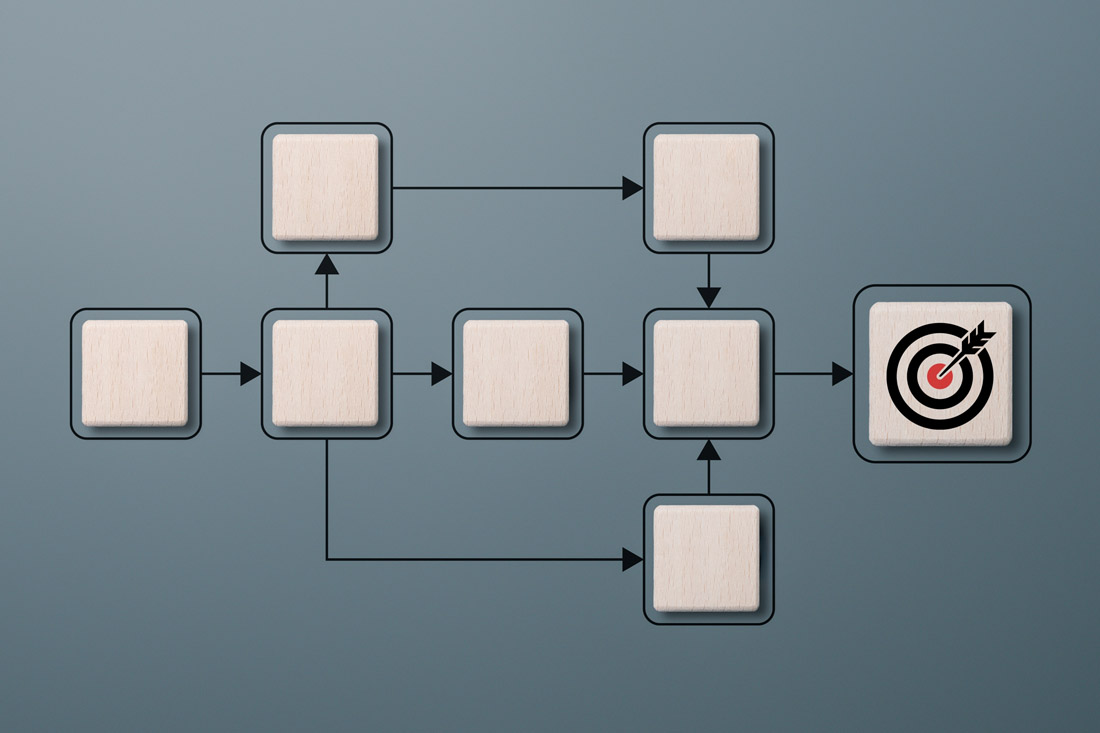In business leadership, two critical terms often come up: business process management (BPM) and workflow management (WFM). While these concepts may appear similar at first glance, they actually represent distinct practices.
To help you understand the differences, we’ll explore both areas — what they are, why they matter and how to choose between the two.
What is business process management?
Business process management (BPM) is the structured approach organizations use to improve employee productivity, increase customer satisfaction and refine how work gets done. It encompasses a wide range of processes — virtually any activity to streamline operations and make teams more efficient.
Analyzing performance metrics, evaluating workloads and conducting impact analyses are all examples of BPM in action. Each activity serves as a business process “map” to show how information flows within the organization. Together, they empower you to identify bottlenecks, make data-driven decisions, improve operational efficiency and ultimately achieve goals faster.
If you want to remain agile and competitive, ongoing process management is a must. After all, your company won’t function without proper execution of day-to-day processes.
However, BPM is not the same as workflow management.
What is workflow management?
Workflow management (WFM) is a granular approach for optimizing individual tasks within a business process. While BPM includes multiple workflows, WFM concentrates on just one.
As a category of business process management, WFM deals with the sequence of activities and approvals required to complete a task on time. Companies use it to automate repetitive activities, assign responsibilities, track progress and ensure jobs are completed in the right order. When you manage workflows, you don’t just create a timeline — you enhance the quality of work, reduce the risk of human error, ensure consistency and improve productivity.
Components of business process and workflow management
Business process management and workflow management don’t just go hand-in-hand. They’re equally important when it comes to ensuring business runs smoothly.
4 steps for proper business process management
The essential steps for effective business process management include:
- Identification: This is the initial step of BPM, where you define business processes — both the ones already in place and the ones you need to build. How do they align to your organization’s goals? Who are the key stakeholders? What activities do they include?
- Analysis: Once you identify specific processes, the next step is to analyze them. Use software to identify bottlenecks, inefficiencies and areas for improvement.
- Design and implementation: Next, map out the sequence of activities you need to optimize processes. Define roles, assign responsibilities and establish performance benchmarks. Then use the appropriate tools and technologies to put everything in place.
- Monitoring and optimization: Continuous improvement is a fundamental aspect of BPM. Use workforce analytics to track the performance of your processes in real-time so you can adjust and refine.
3 steps for effective workflow management
While BPM focuses on overarching processes, WFM coordinates the individual tasks within each process. The key elements of workflow management include:
- Assignments: First, ensure each task is assigned to the right person or team based on skills, availability and current workloads. This will minimize delays and make the most of existing resources.
- Tracking: Use a workflow management system to monitor the progress of tasks in real-time. Tracking status, completion dates and approval processes with workflow automation reduces the risk of miscommunication and missed deadlines.
- Escalation: When a task is delayed, find out why. Then discuss any unresolved issues with all parties involved to address roadblocks.
Differences between business process and workflow management
The biggest differences between business process management and workflow management include:
- Focus: While BPM focuses on managing end-to-end processes across departments and functions, WFM singles out individual tasks.
- Goals: The goal of WFM is to complete individual tasks as quickly and efficiently as possible. For BPM, the goal is to boost productivity across the entire organization.
- Scope: WFM offers a structured approach for completing a single task or set of related tasks, whereas BPM takes a broader approach to improving organization-wide processes.
- Complexity: WFM is a straightforward process of managing deadlines and responsibilities, while BPM requires deeper analysis of intricate and interdependent processes.
Example of business process and workflow management
As an example of business process management and workflow management, consider how a sales team functions in any business. In sales, agent may be asked to find new leads, reach out, follow up, create pitch deliverables, and coordinate paperwork to secure new deals. Workflow management would take a granular approach to optimize each of these processes individually, while business process management would look at streamlining the sales process as a whole.
For example, during workflow management, the company might focus on how they can streamline the process of finding new leads. Investing in better research tools, purchasing a list of leads from providers or creating a referral program are all strategies a company could use to reduce the time agents have to spend finding new leads. However, business process management would take a step back to look at the bigger picture and see if all steps in the sales process are necessary at all. For instance, the company might discover that time spent following up with people that don’t respond isn’t worth the investment, or that it’s better to have accounting coordinate closing paperwork instead of sales agents.
That is to say, business process management and workflow management are both means of streamlining workflows. The main difference is that business process management looks at several workflows on a larger scale, while workflow management looks at tasks individually.
Choosing between business process and workflow management
Business process management and workflow management are equally important — don’t make the mistake of choosing one over the other. While WFM ensures tasks are completed on time, BPM ensures the right tasks work together toward the right organizational goals. To remain agile and competitive, you need both.
If you’re looking for a reliable way to optimize business processes and workflows, ActivTrak can help. Schedule a demo to discover the insights you’ll gain with our workforce optimization software.





